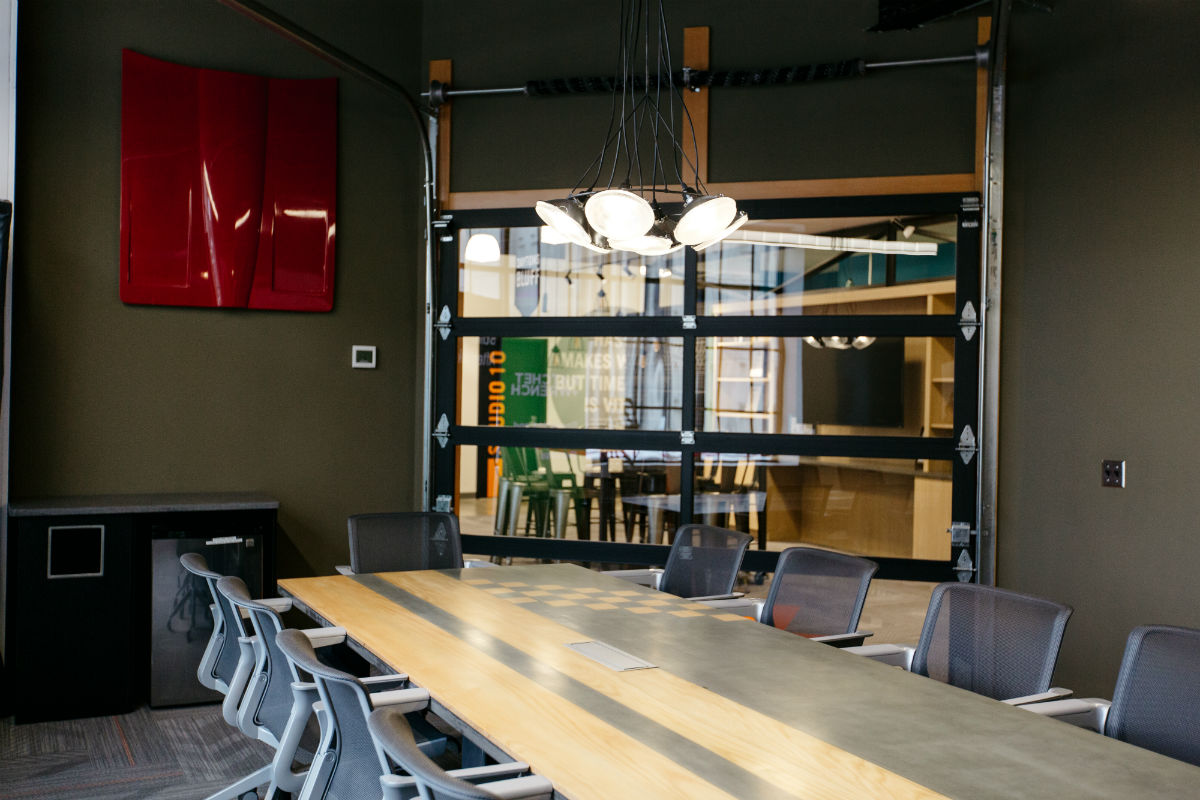At Shea, we pride ourselves on staying on top of what’s happening in design news. It helps us keep tabs on what’s fresh, inspiring, and happening in the world—and we make a few headlines of our own, too. Here are some recent articles delving into design, experience, and what’s buzzing in our community:
“The New Workplace Formula: Positivity, Mindfulness, Community, Vibrancy, Identity and Purpose” – Work Design:
This Work Design piece examines how positivity, mindfulness, community, vibrancy, identity, and purpose come together in the modern workplace to create a formula for hybrid-office success in an era of demand for a new work environment, where 80% of return-to-work survey respondents mark “wellness” as a top priority in a post-pandemic office. Dedicating design attention to a progressive wellness environment is one way to help draw workers back and keep them emotionally connected to the office, by fully embedding those values into a workplace. This story breaks down how each of these elements can be used in design to bring workers together as a community and also give them the individual space they need, all while driving a company’s culture and ethos.
“America’s Next Great Restaurants Are in the Suburbs. But Can They Thrive There?” – New York Times:
As chefs strive for balance and consistent communities of diners, more and more are shifting to the suburbs from competitive urban landscapes. Lower rents and less competition beckon creative culinary concepts, but there’s a lot of risk in these ventures—less media coverage and prestige, and the chance that flavors and dishes may be too adventurous and challenging for locals (leading often to shifts in menu and concept). Global restaurants opening in the suburbs can be a great way to bring in a new demographic and an increasingly urban feel, and the option of more space (particularly for outdoor dining) is appealing to restaurateurs. But the defining features of suburbs—their urban plans, the restrictions around grants and zoning and government departments—can make it hard for any small business to thrive. To be successful in the suburbs, restaurants need to get the government and the city patrons behind them.
“How COVID Changed Restaurants’ Approach to Real Estate” – FSR:
While many restaurants struggled to survive during the pandemic, some brands (particularly fast-casuals) thrived—and they’re ready to grow, with a new mindset in terms of their store footprints and the markets they’re looking to move into. Many are looking to layouts more conducive to takeout and delivery, and are open to a mix of new sites and the now-available second-generation sites from restaurants that shuttered in the last two years—as well as remaining nimble when it comes to thinking about different areas to open up shop in, from downtown urban locations to college campuses and suburbs. Finding the right site is important for brand success—some brands need spaces that are more conducive to parking, patios, and larger footprints, while others can reduce their size and count on foot traffic.
“Minnesota Monthly Puts a Shine on The Copperfield” – Shea:
Minnesota Monthly reviews The Copperfield in Mendota Heights, noting its stellar design and approachable menu.
“The Rise of Next-Gen Retail: Shifts in Shopping Center Design” – Chain Store Age:
In a post-pandemic world, retailers are shifting their physical store models to adapt to consumer desires, taking advantage of the cravings to get out and shop in person. Beyond individual stores, shopping-center designers and developers are adapting as well. Their real draw is as community spaces, created with intention to include indoor and outdoor amenities like dining space, landscaping, and play areas. A strong mix of tenants and retail experiences is important as well, with more stores offering immersive or experiential elements to their designs (whether it’s an in-store bar or demonstration areas for products), and more service-oriented spaces like gyms in traditional malls. Finally, stores are taking distribution space into account as e-commerce continues to rise, and they need to be designed accordingly to fit into their mall spaces while providing what the staff needs to assemble pickup orders.
“Fitness Trends Beyond the Treadmill in Hotel Design” – Hotel Designs:
With the rise of the wellness industry impacting all sectors of business, hotel fitness centers need to be more than just treadmills and free weights. This piece looks at how their design has evolved to help hotels create a point of differentiation for themselves, whether they’re exclusively for guest use or open to memberships for locals. Experience-led design is permeating spa and wellness spaces, with nature and biophilia taking a spotlight in spaces. Preferred layouts are open, light, and airy, and the more they can incorporate any surrounding nature, the better. Technology must be included thoughtfully, with a wellness-centered purpose at its heart, and rooms for fitness classes should be designed with a distinct purpose in mind—one that brings people together while making their health paramount.
“After Urban Flight, Corporate Campuses Add a Taste of the City” – New York Times:
The New York Times looks at how suburban company headquarters are being reimagined to include amenities that will attract workers and integrate into their communities as more companies shift their focus away from downtown cores. Suburbs are becoming more urbanized, and this appeals to workers and company leadership alike as they can make easy connections to their communities and surroundings while reaping the benefits of suburban work (less traffic, more parking, adjacency to mixed-use developments). These headquarters can be huge and sprawling, spanning multiple buildings, depending on the size of the company, and it makes sense that companies want to be involved in the growth of the surrounding areas, introducing amenities and features that complement them.
“Fine Dining Upswings and Downswings” – Foodservice Equipment & Supplies:
Fine-dining restaurants were among the hardest hit by the pandemic, as many patrons’ interests have moved towards quicker meals, takeout, and delivery. Some have shifted their atmospheres to being more casual, while still serving top-notch food at high levels of hospitality. Others have leaned into experiential elements—tableside presentations, opulent atmosphere, customer connection—to contrast the rise in fast-casual. Rising menu prices (to combat food and labor costs) are inevitable, and likely to take a toll on fine-dining spots, so they’ll be looking to optimize their menus further. And even fine-dining spots are going to continue the renewed emphasis on investment in technology, takeout, and delivery, along with meal kits, cooking classes, and other additional revenue streams to bolster recognition as well as sales.
“Billy After Dark to Come to Billy Sushi With a Shea Design” – Shea:
All the news on the Shea-designed, speakeasy-style Billy After Dark coming to lauded North Loop Japanese spot Billy Sushi
“The Coolest Place to Drink is Your Local Bookstore” – Eater:
Bookstores with bars are the hippest places to hang out now, bringing together retail and restaurant in an updated way. Design is key to making this work—creating a curated selection of fixtures that feels like an intentional intersection with a café area, rather than two concepts smashed together, so that the retail and bar sides can support each other. It’s also about creating the right kind of vibe, one that suits both the bookstore and bar ideas while driving the notion that it’s a unique spot with a creative business model (a particularly difficult one to navigate, as these bars tend to lean towards the more high-brow selections).
February 4, 2022
Shea Links: February

